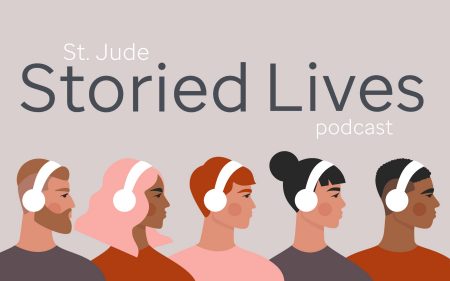
A New Cure for 'Bubble Boy'
Donors applaud as St. Jude announces gene therapy cure for babies with X-linked severe combined immunodeficiency.

April 18, 2019 • 2 min

The announcement Wednesday that gene therapy developed at St. Jude Children’s Research Hospital cured infants born with so-called “Bubble Boy” disease generated coverage from the likes of The Washington Post and ABC News, not to mention international media outlets.
At the same time, the news proved especially gratifying to longtime St. Jude supporters who year after year underwrite studies that rarely garner headlines.
“We’re delighted,” said Jan Young, executive director of The Assisi Foundation of Memphis. “We didn’t know it would come to this.”
Assisi was among the significant funding sources for the research initiative leading to the development of successful therapy for X-linked severe combined immunodeficiency, a genetic condition that leaves children unable to fight even the most common of infections or illnesses. For the past several years, foundation leaders listened to proposals and then updates about the project from St. Jude researchers.
Major support for the gene-therapy work also came from the California Institute of Regenerative Medicine, the National Institutes of Health and ALSAC, the fundraising and awareness organization for St. Jude. Money from many private donors also helped fund the studies.
Findings published Thursday in the New England Journal of Medicine detailed how kids treated at St. Jude and a San Francisco hospital received gene therapy for the often-fatal disorder that had left them with little or no immune protection. The disease, caused by a mutation in a gene critical to normal immune function, drew national attention in the 1970s with the plight of David Vetter, who grew up sheathed in a plastic bubble.
The gene therapy, produced in the Children’s GMP, LLC, manufacturing facility on the St. Jude campus, involved use of a virus to transport and insert a correct copy of a gene into the genome of patients’ blood stem cells. Following the treatment, the children began producing functioning immune cells for the first time, according to St. Jude, and most patients were discharged from the hospital within one month.
To date, the best treatment for the disorder has been bone-marrow transplantation. But with most patients lacking a tissue-matching sibling, their prospects for cure are greatly diminished.
For Assisi, the funding of the gene therapy research continued a legacy of support for St. Jude dating back to the establishment of the foundation a quarter-century ago from the sale of St. Francis Hospital. Every year, Assisi provides between $750,000 and $1 million for research projects at St. Jude, Young said.
“Obviously, St. Jude does good work,” she said. “We’re honoring an ethical commitment started by our board when we were still a hospital.”
Most initiatives funded by the group get little or no publicity, and that’s just fine, Young said. It’s the “little victories” that provide a lasting contribution to science and dialogue among researchers that often are most critical.
“The little victories that don’t make the New England Journal of Medicine or the Washington Post…They’re the building blocks,” Young said.





